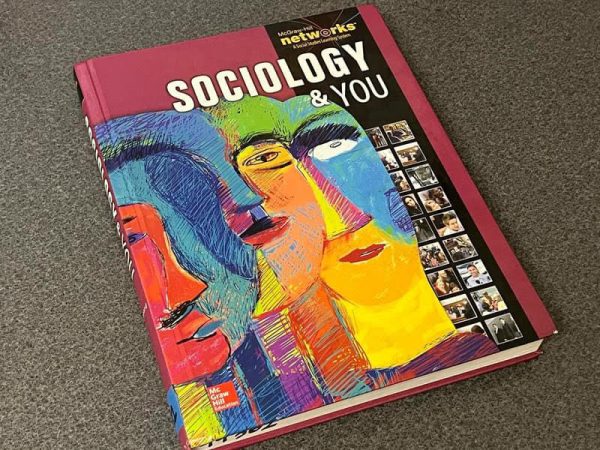First black hole photo opens up an infinity of possibilities
The first black hole photo sprouted wonder and curiosity throughout; learn about the process behind the now iconic image.
Photo by Rice
The first image of a black hole may have been blurry, but this is one large leap for mankind.
May 24, 2019
Black holes have been a mystery for years, and the dream of ever seeing one was thought impossible. But on Apr. 10, an image of a supermassive black hole was released to the public. The photo was taken by a team of roughly 200 researchers from the Event Horizon Telescope (EHT) who spent over a decade researching and attempting to take the image of Galaxy M87’s black hole. This sky-shattering image has helped prove Einstein’s Theory of General Relativity. While taking an image of a black hole is actually impossible since its gravitational pull is so strong it sucks light in, in this case, a black hole of this size ejects supercharged particles that illuminate around it, leaving the projection of the event horizon visible to the human eye. This image will allow scientists to further test Einstein’s theory of General Relativity.
“In a paradox of its own gravity you wind up seeing it because all the gas and dust that’s attracted to it gets crushed into a smaller and smaller volume, causing it to heat up to hundreds of billions of degrees. So you wind up with a 3-D flashlight illuminating all the space-time around the black hole,” said Sheperd Doeleman, the director of the EHT.
How this photo was taken is just as amazing as the photo itself. EHT used six giant telescope arrays positioned across the globe to basically turn Earth into a radio dish; this allowed the team to receive data of the black hole and piece together the photo. This tactic can only be used for supermassive black holes, because the telescopes can only detect it when it’s insanely bright. But the EHT are hoping to take pictures of a supermassive black hole binary, which is two black holes orbiting each other.
“The EHT observations require measurements of light received from M87 every nanosecond in order to properly sample the incoming high-frequency radio waves. We capture and freeze that light locally at each telescope. Storing that information requires hundreds of terabytes of space, shipped around the globe for later combination by a supercomputer. High-quality data from a wide array of telescopes let us form images that we trust,” said Daniel Palumbo,a scientist from the Harvard-Smithsonian Center for Astrophysics (CfA).
While the thought of something that weighs 6.5 billion times the mass of the sun and 38 billion kilometers in diameter is astonishing, we still know very little about black holes. This image and the technology that provided the image will help shine a light into the mystery that is black holes.
“We normally think of a black hole as invisible because it doesn’t let any light out, but the fact that we can image something that’s not there is really exciting. There’s millions and billions of black holes in the universe so I think this is the beginning of getting a lot more information about black holes which I think a lot of people are interested in,” said Mrs. Nelson, the physics teacher.







Edgar Vidal • May 31, 2019 at 12:12 am
It’s far from politics Dominic, like how you would never speak about gravity without consideration the contributions made by newton’s fascinating concept that objects attract at a force proportional to the inverse of the square distance. Or how you would never exclude details general relativity without speaking about Einstein. Let’s remember that politics in simplest of terms is the way people make decisions to run their society or government. My suggestion really was give credit where credit is due which refrains from the idea that mentioning a name will lead to an altercation in the way our society governs itself.
Dominic Gabbour • May 30, 2019 at 9:35 pm
Hey Dylan, this is a very good article. I appreciate the hard work and research that went into this article. I feel like I came out of it a little smarter. I highly recommend ignoring comments that seek to move the subject away from the black hole and more toward politics, since politics doesn’t belong in science (unless it’s political science, that is, but this isn’t). You did an outstanding job and I feel that science and technology news should become a more frequent occurrence on this website since those subjects always turn out to be so interesting. Thanks for writing this!
Edgar Vidal • May 28, 2019 at 5:28 pm
What’s up Dylan Reece how you doing? I would just like to say that your article could have included the contributions of the computer scientist, Katie Bouman, who served as led developer for the algorithm that processed the image of the black hole. As a post doc from MIT, who is transitioning to work at Cal Tech, her work undermines the stereotype that men lead scientific advancement and achievements. I find that great and feel we should all celebrate those accomplishments that break stereotypes and emphasize the work done by underrepresented groups – in this case, women who are underrepresented in STEM fields, particularly, mathematical and physical sciences. I encourage you to read more about Bouman if you have the time and consider specific people in your future articles. But nice article my dude, it’s nice to see news on Astronomy.
Best regards,
Edgar